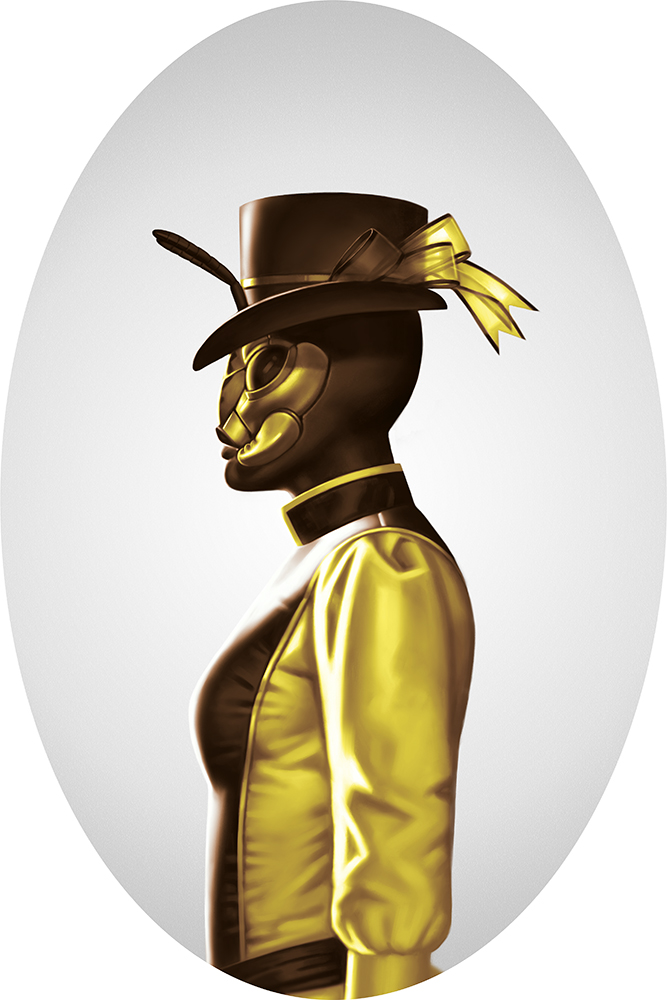Dear Art Graduate,
Create accountability.
"Jovian Fantasy" was created for the Parallel show with Light Grey Art Lab--a great motivation factor.
In my last post, I talked about how creating a series of pieces can strengthen your portfolio. It's a great thought, but it won't come to fruition through sheer force of will--it also takes time management and external motivation. Here are the tools that help me organize my time and light a fire under my rear:
Time Management
1. Use a Calendar
Write it down: project deadlines, gallery shows, local networking events, conventions, and any events that might be beneficial, even if you're on the fence on whether to go or not. Studies show that writing things down can make you 42% more likely to do it. For me, the likelihood is even higher (~90%) since I make it part of my routine. I use a white board calendar, which I find faster to manipulate than a digital calendar. With that said, you should use whatever calendar is most effective for you. First, I would suggest writing down your larger goals and events for the year (big conventions may require multiple months of preparation). Next, use the first day or last day of the month to lay out the smaller goals and events for the month. For month-long illustrations, I will subdivide my deadlines to include deadlines for thumbnails, revised thumbnails, finished painting, and coloring. Just remember to check your calendar, which will free your mind to focus on creating great art!
2. Record Your Working Hours
Start recording your hours when working on a project. If you have never done it, be consistent and record every project. I use Toggl, a free time tracking program that lets you label time slots and creates a monthly overview of how you allocate your time. You can record time separately for thumbnail sketching and for the final execution of an illustration, which will give you a better sense of what to charge clients. When I make a quote, I like to find a balance between my hourly rate and standard illustration pricing. It may surprise you how long your illustration takes and that knowledge is important in planning future projects. You can also use that knowledge to negotiate with clients who are unfamiliar with the often time-intensive processes in illustration.
External Motivation
It helps to have people to keep you accountable for finishing your work, which is part of what makes art school so attractive. Here are a few ways to motivate your learning and productivity without costing your firstborn:
1. Submit Your Art
Submitting your art can include art competitions, online communities, gallery submissions, and art annual submissions. There are a bunch of art challenges out there, so focus on ones that really resonate with you. Always read the fine print for art contests, especially ones that utilize the winning artwork for a product or for advertisement purposes. A red flag would be if the winning entrants lose all rights to their work without appropriate compensation. It's more my personal stance on business ethics, but the question I ask before entering a contest is, "Is the artwork for this contest for a product that an art director typically hires an artist for?" If the answer is "yes", I don't enter the contest.
Here are a bunch of great submission avenues that I currently participate in or have recently participated in:
- Illustration West (art annual)
- Spectrum Fantastic Art (art annual)
- Infected by Art (art annual)
- Art Order (art challenges)
- Light Grey Art Lab (gallery submissions)
- The Rookies (art contest)
- Triptych Blog (collaborative group)
- Character Design Challenge (online community)
- Inktober (art challenge)
The super secret tip to entering all these things is to join mailing lists. They will straight up email you the deadlines! It's madness!
2. Participate in Local Art & Small Business Gatherings
Many art and small business gatherings are education-focused. Mingle among those who can share their more advanced techniques and freelance insight! There's nothing quite like bouncing ideas off of people and getting a healthy dose of art critique too. You will start developing valuable relationships with people who will encourage you and check in on your progress.
Coming to a city near you:
- Chamber of Commerce After-Hours/ Local Business Gatherings
- Collaborative Workspace Mixers (these workspaces are popping up everywhere)
- Local Art Association Events
- Open Studio Events/Gallery Receptions
- Drawing Clubs/Meet-Ups (can ben discovered via Facebook and meetup.com)
- Local Conventions/Art Shows
- Workshops and Demonstrations
I stress local events as great sources of motivation since you will make more frequent and often deeper connections with people than at distant events. Look to Facebook, your local newspaper, and coffee shop pin boards for local events!
What helps motivate you? Share with us your best fire-igniters in the comments!




